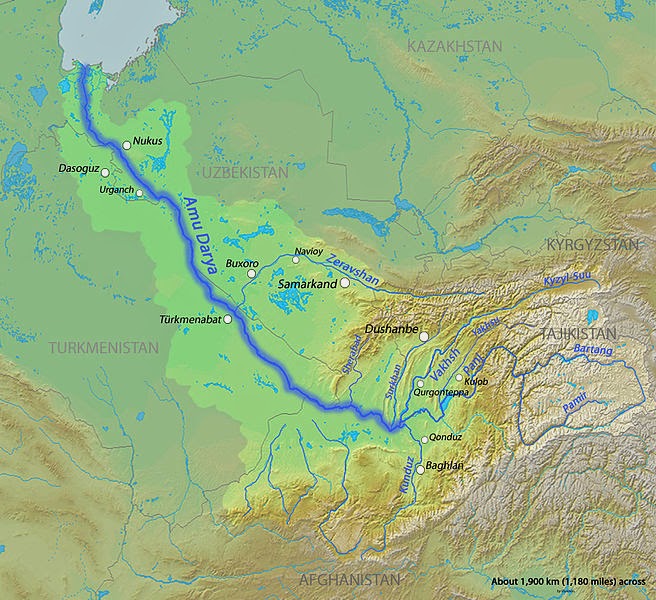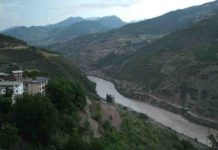
The Amu Darya is a major river in Central Asia. It is formed by the junction of the Vakhsh and Panj rivers and flows into the Aral Sea. In ancient times, the river was regarded as the boundary between Greater Iran and Turan.
Names
In classical antiquity, the river was known as the Ōxus in Latin and Ὦξος Oxos in Greek—a clear derivative of Vakhsh — the name of the largest tributary of the river. In Vedic Sanskrit, the river is also referred to as Vaksu (वक्षु). The Avestan texts too refer to the River as Yaksha-arte.
In ancient Afghanistan, the river was also called Gozan, descriptions of which can be found in the book “The Kingdom of Afghanistan: a historical sketch By George Passman Tate”. In Middle Persian sources of the Sassanid period the river is known as Wehrōd (lit. “good river”).
The name Amu is said to have come from the medieval city of Āmul, (later, Chahar Joy/Charjunow, and now known as Türkmenabat), in modern Turkmenistan, with Darya being the Persian word for “river”.
Medieval Arabic and Muslim sources call the river Jayhoun (جيحون) which is derived from Gihon, the biblical name for one of the four rivers of the Garden of Eden.
Watershed
About 1,385,045 square kilometres (534,769 sq mi) of land is drained by the Amu Darya into the Aral Sea endorheic basin. This includes most of Tajikistan, the southwest corner of Kyrgyzstan, the northeast corner of Afghanistan, a long narrow portion of eastern Turkmenistan and about half of Uzbekistan. Part of the Amu Darya’s drainage divide in Tajikistan forms that country’s border with China (in the east) and Pakistan (to the south). About 61% of the drainage lies within Tajikistan, Uzbekistan and Turkmenistan, while 39% is in Afghanistan. Of the area drained by the Amu Darya, only about 200,000 square kilometres (77,000 sq mi) actively contribute water to the river. This is because many of the river’s major tributaries (especially the Zeravshan River) have been diverted, and much of the river’s drainage is dominated by outlying desert and steppe.
The abundant water flowing in the Amu Darya comes almost entirely from glaciers in the Pamir Mountains and Tian Shan, which, standing above the surrounding arid plain, collect atmospheric moisture which otherwise would probably escape somewhere else. Without its mountain water sources, the Amu Darya would not contain any water—would not exist—because it rarely rains in the lowlands through which most of the river flows. Throughout most of the steppe, the annual rainfall is about 300 millimetres (12 in).
Note : The above story is based on materials provided by Wikipedia.










